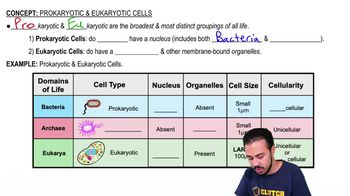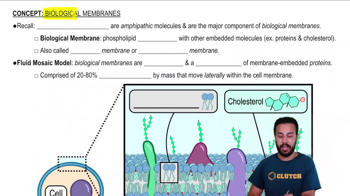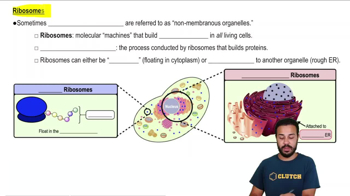Multiple Choice
Bacterial cells are prokaryotic. Unlike a typical eukaryotic cell, they __________.
3071
views

 Verified step by step guidance
Verified step by step guidance



 5:54m
5:54mMaster Prokaryotic & Eukaryotic Cells with a bite sized video explanation from Bruce Bryan
Start learning